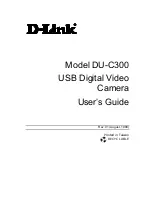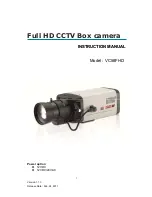
Radio Waves Used by this Product
This product makes use of radio waves in the ISM band (2.4 GHz).
Although a radio station license is not required for using this product, please
take note of the following.
o
Do not use this product near the following places.
0
Industrial, scientific, or medical equipment, such as microwave ovens and
pacemakers
0
Industrial, scientific, or medical equipment, such as microwave ovens and
pacemakers
0
Specified low-power radio stations (radio station license not required)
0
Bluetooth devices
Equipment such as the above mentioned devices makes use of the same
frequency bandwidth as that of Wi-Fi.
Using this product near the above equipment may cause radio wave
interference, and result in communication failure or a drop in communication
speed. In this case, turn off the power of devices that are not in use.
o
Avoid using this product near a TV or radio set.
TV or radio sets make use of a radio wave frequency bandwidth that is
different from that of Wi-Fi, and therefore has no effect on communication
by this product or the TV/radio set.
However, when a TV/radio set is placed close to a Wi-Fi product,
electromagnetic waves emitted by the Wi-Fi product may cause noise to
occur in the sound or images of the TV/radio.
0
Communication may not be carried out properly near radio equipment or
broadcasting stations. In this case, change the location accordingly.
o
Radio signals are unable to penetrate through reinforced
steel, metal, or concrete.
The radio waves used by this product are unable to penetrate through
reinforced steel, metal, or concrete materials.
It may difficult for communication to be established if two rooms or floors are
separated by these materials.
*Communication may also get weaker when there are human subjects or
parts of the body in between the Wi-Fi devices.
o
Do not connect to wireless networks that you do not have
authorization for.
Once connected, it may be considered as unauthorized access and legal
actions can be taken against you.
o
Do not use the Wi-Fi function outside the country of
purchase.
Depending on the country, there may be restrictions on the use of radio
waves and any violations could be punishable by law.
Exporting/Bringing the Unit Overseas
Permission from the U.S. government may be required when bringing the
unit to an export controlled country set by the U.S. government (such as
Cuba, Iraq, North Korea, Iran, Rwanda, and Syria. As of December, 2012).
For more information, consult the U.S. Embassy Commercial Service.
Image Monitoring via Direct Connection
(DIRECT MONITORING)
You can check the image captured on the camera via direct connection (Wi-
Fi Direct) with a smartphone, without the need for an access point (wireless
LAN router).
0
Recording of videos and still images may be performed while monitoring.
.
Caution :
0
This function is not designed for disaster or crime prevention.
0
To prevent the situation of forgetting to turn off the power, this unit will turn
off automatically after 10 days of continuous usage.
0
When not monitoring from a smartphone, the focus of the camera is fixed.
0
Even when monitoring from a smartphone, the focus of the camera will be
fixed if not operated for more than 3 hours. (Focus works again when the
camera is operated.)
0
You may have difficulty establishing a connection via direct monitoring in
an environment where the camera is placed away from the smartphone.
In this case, connect using the access point (wireless LAN router).
“Image Monitoring via an Access Point at Home (INDOOR MONITORING)”
0
Depending on the device in use or connecting environment, it may take
some time to establish a connection.
What You Need
0
Smartphone
(Wi-Fi that is compatible with WPA2 is necessary.)
Settings Required in Advance
Set up your camera and smartphone by performing the following operations.
For a smartphone with WPS support, refer to the “Wi-Fi Protected Setup
(WPS)”.
*WPS is a method to connect the camera and the smartphone wirelessly by
easy button operations.
Using Wi-Fi
88
















































